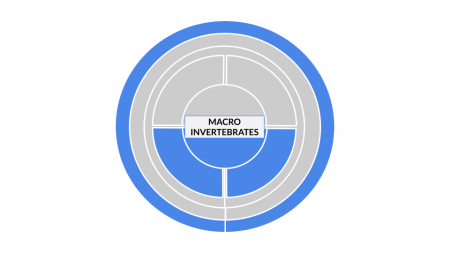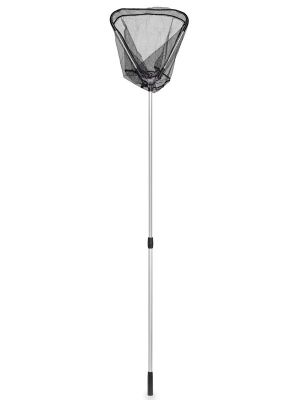Difference between revisions of "Macroinvertebrates"
Oskarlemke (talk | contribs) |
Oskarlemke (talk | contribs) |
||
| Line 27: | Line 27: | ||
|} | |} | ||
| + | |||
| + | ==Netting== | ||
| + | === What the method does === | ||
| + | [[File:Fig1 TeichkescherMACROINVERTEBRATES.jpg|thumb|Source: https://www.der-gartenteich.com/teichkescher-klappbar-art.nr.-84296?sPartner=google-de-ts&c=172&gclid=Cj0KCQiA1sucBhDgARIsAFoytUvZORDGHrnxv01LJzM4d4JWxv9RoA5PRK0qP6bboR64KUU2WktN_dgaArTnEALw_wcB ]] | ||
| + | Netting with a pond net (Figure 1) is a quick method to catch macroinvertebrates. Depending on the species that should be caught, different kinds of movements are suggested. Moving the net in a figure of 8 above the substrate stirs the invertebrates so that they can be caught with the net. By pressing the rim of the net against rocks, tightly clinging nymphs can be caught. At the end of the movement, the net is twisted so that the bag flips to the other side of the rim and the invertebrates are prevented from escaping. | ||
---- | ---- | ||
Revision as of 14:05, 18 April 2023
| Method categorization | ||
|---|---|---|
| Quantitative | Qualitative | |
| Inductive | Deductive | |
| Individual | System | Global |
| Past | Present | Future |
In short: Netting, kick sampling and taking benthic cores are methods for collecting macroinvertebrate samples to obtain information about the water quality of a river, lake or pond.
| Netting | Kick sampling | Taking benthic cores | |
| Zone | nekton | riffles in nekton | benthal |
| Speed of water | slow | fast-flowing | still or slow-moving |
| Depth of water | shallow (pond nets), deep (tow nets) | shallow | shallow/ deep (using a boat) |
Netting
What the method does
Netting with a pond net (Figure 1) is a quick method to catch macroinvertebrates. Depending on the species that should be caught, different kinds of movements are suggested. Moving the net in a figure of 8 above the substrate stirs the invertebrates so that they can be caught with the net. By pressing the rim of the net against rocks, tightly clinging nymphs can be caught. At the end of the movement, the net is twisted so that the bag flips to the other side of the rim and the invertebrates are prevented from escaping.
The author of this entry is Anna-Lena Rau.

